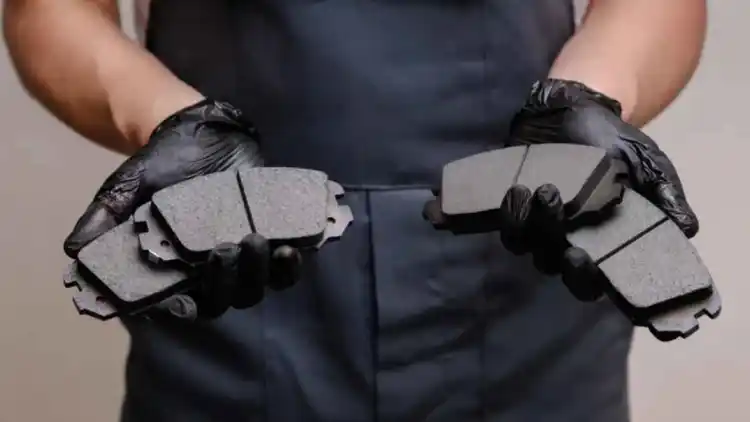- What Is an Ambulance Car?
- Key Features of Modern Ambulance Cars
- Why Are Ambulance Cars Crucial?
- Tips for Calling an Ambulance
- Trends in Ambulance Cars for 2025 and Beyond
- FAQ
The ambulance car is designed to provide rapid medical assistance in emergencies. Equipped with life-saving tools, advanced communication systems, and efficient transport capabilities, the ambulance car ensures timely care for patients. This guide explains its functions, equipment, and operational importance worldwide.
What Is an Ambulance Car?
An ambulance car is not just another vehicle. It’s a mobile medical unit with trained professionals ready to provide medical help at any time and in any situation. Fitted with an array of medical tools and lifesaving gear, these vehicles are specially designed to assist patients during emergencies and safely transport them to healthcare facilities. Their distinct flashing lights and sirens make them easily recognizable, signaling urgency and creating a clear path through traffic. Ambulance cars are also designed to operate in various terrains and weather conditions, ensuring they can reach patients no matter where they are.
Key Features of Modern Ambulance Cars

Modern ambulance cars are more advanced than ever, continuously improving their functionality and efficiency in emergency care. Here’s a detailed look at the features that make them so special:
Advanced Medical Equipment
Defibrillators: These devices deliver controlled shocks to the heart, restoring its regular rhythm during cardiac emergencies.
Oxygen Masks and Tanks: Critical for patients who have difficulty breathing or require stable oxygen levels.
Emergency Medication and IV Kits: Allows paramedics to treat pain, allergic reactions, or dehydration immediately during transit.
Portable Monitors: Equip paramedics with real-time readings of a patient’s pulse, blood pressure, and other vital signs.
Highly Efficient Communication Systems
Effective communication is essential in emergencies. Ambulances are equipped with the latest GPS systems for accurate navigation, two-way radios for clear coordination, and sometimes even mobile internet to share real-time patient data with hospitals. These systems ensure that medical teams are prepared the moment the patient arrives.
Sirens and Lights for Traffic Prioritization
The loud sirens coupled with flashing lights are designed to alert people and vehicles to move aside. This reduces delays and maximizes the chances of timely arrival, even in congested urban areas.
Safety Features for Patient and Crew
Inside an ambulance car, every detail is crafted with safety in mind. Patients are secured with stretchers and belts, while soft padding minimizes injury risk during movement. Sufficient space ensures medical personnel can perform their duties effectively without feeling restricted.
Specialized Ambulance Types
Ambulance cars are tailored for different purposes:
Basic Life Support (BLS): Primarily for patients requiring transportation with little to no immediate medical intervention.
Advanced Life Support (ALS): Enhanced vehicles equipped for severe emergencies like heart attacks or trauma.
Non-Emergency Medical Transport (NEMT): These are used to transport patients for routine visits or consultations without urgency.
Why Are Ambulance Cars Crucial?

In moments of crisis, ambulance cars bridge the gap between life and death. Here’s why they’re indispensable:
Rapid Response
Every second counts in an emergency. Ambulance cars are structured to reach patients quickly, thanks to their streamlined design, experienced drivers, and priority traffic systems.
Providing Immediate Medical Care
Ambulance teams are often the first responders in critical situations. They stabilize patients at the scene, administer medications, and decide on the most urgent procedures to manage a crisis.
Equal Access to Emergency Services
Emergencies don’t discriminate, and neither should response systems. Ambulances are dispatched for people in all kinds of scenarios, whether in affluent urban centers or remote rural regions. They deliver timely aid during natural disasters, accidents, and pandemics.
Tips for Calling an Ambulance
In emergencies, the ability to effectively call for help can make a big difference. Here’s how:
Provide Precise Location Details: Share landmarks, nearby structures, or GPS pins to ensure the ambulance can reach you without delay.
Clearly State the Nature of the Emergency: Accurately describe symptoms like unconsciousness, heavy bleeding, or visible injuries.
Remain Calm and Focused: Emotional distress can hinder communication; employ clear and calm language.
Follow Dispatcher Instructions: Emergency operators may offer first-aid steps or ask additional questions—listen carefully and act promptly.
Trends in Ambulance Cars for 2025 and Beyond
The world of ambulance cars is constantly evolving to improve emergency services. Here are some game-changing trends to watch out for:
Electric Ambulances: These environmentally friendly vehicles operate with lower emissions and reduced noise, perfect for urban development.
Autonomous Driving Technology: Self-driving ambulances could revolutionize response times and improve traffic navigation.
Telemedicine-Enabled Vehicles: Digital systems allow real-time video calls with specialists, so paramedics can consult doctors while en route.
Focus on Ergonomics: Ambulance interiors are being designed for better patient comfort and paramedic efficiency, with modular layouts and softer materials.
FAQ
What types of emergencies are ambulance cars used for?
Ambulances respond to critical events such as accidents, strokes, cardiac arrests, breathing issues, and other serious health problems.
How do ambulance cars communicate with hospitals?
These vehicles use advanced technologies like GPS navigation, radios, and smart devices for seamless coordination with medical facilities.
Are ambulance cars free to use?
Costs often depend on location. Some regions provide free ambulance services, while others may require payment through insurance or direct charges (AED/SAR).
What is the difference between a regular car and an ambulance car?
Unlike regular cars, ambulances are equipped with high-tech medical equipment, prioritize routes with advanced traffic systems, and offer trained personnel for immediate aid.
Can ambulance sirens be turned off during transport?
Yes. Sirens are primarily used for urgency in traffic but may be turned off once a patient’s situation is under control and transit urgency drops.
Ambulance cars are more than just vehicles; they are lifelines during emergencies. Understanding their design, features, and importance can empower you to act effectively when the need arises.
Read More:
2017 Hyundai Elantra Body Kits:2025's Top Customization Trends
Honda Accord 2022: A Comprehensive Look at This Reliable Sedan













